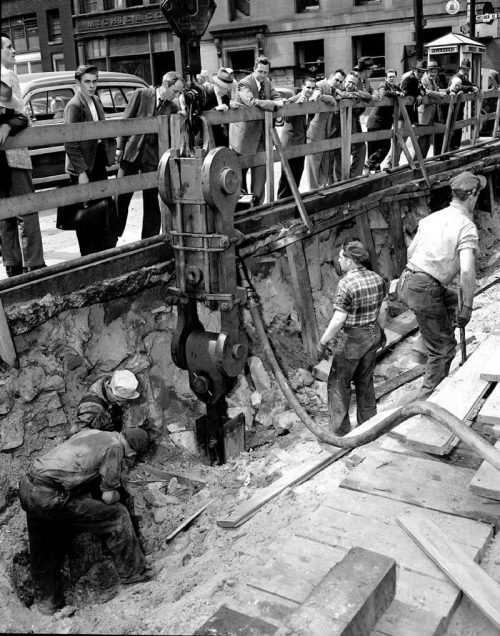
The September 8, 1949 groundbreaking for this enormous public undertaking was a significant media event, broadcast live on radio stations across Toronto and attended by thousands. A stage was set up at Yonge and Wellington streets, directly above where an eighteen-foot-deep excavation would soon be, and Ontario Lieutenant Governor Ray Lawson pushed a lever to drive the first vertical support beam into place.
The structural work was divided into seven sections, managed by a total of four general contractors who employed numerous subcontractors, so the entire length of the line was built roughly at the same time. The work of thousands of people contributed to the subway, from hard rock miners from Northern Ontario – whose expertise working underground was invaluable – to new immigrants bringing their construction skills from Europe, to the employees of the companies that supplied the TTC with brick, insulated wire, tiles, switchboards, and countless other materials, including the subway cars themselves. The TTC estimated the subway’s cost at $50.5 million in 1954 dollars.

The TTC encouraged the interest of its “sidewalk superintendents,” and produced a series of brochures explaining the construction stages to the public.
Back to introduction
Next page - Underground Downtown